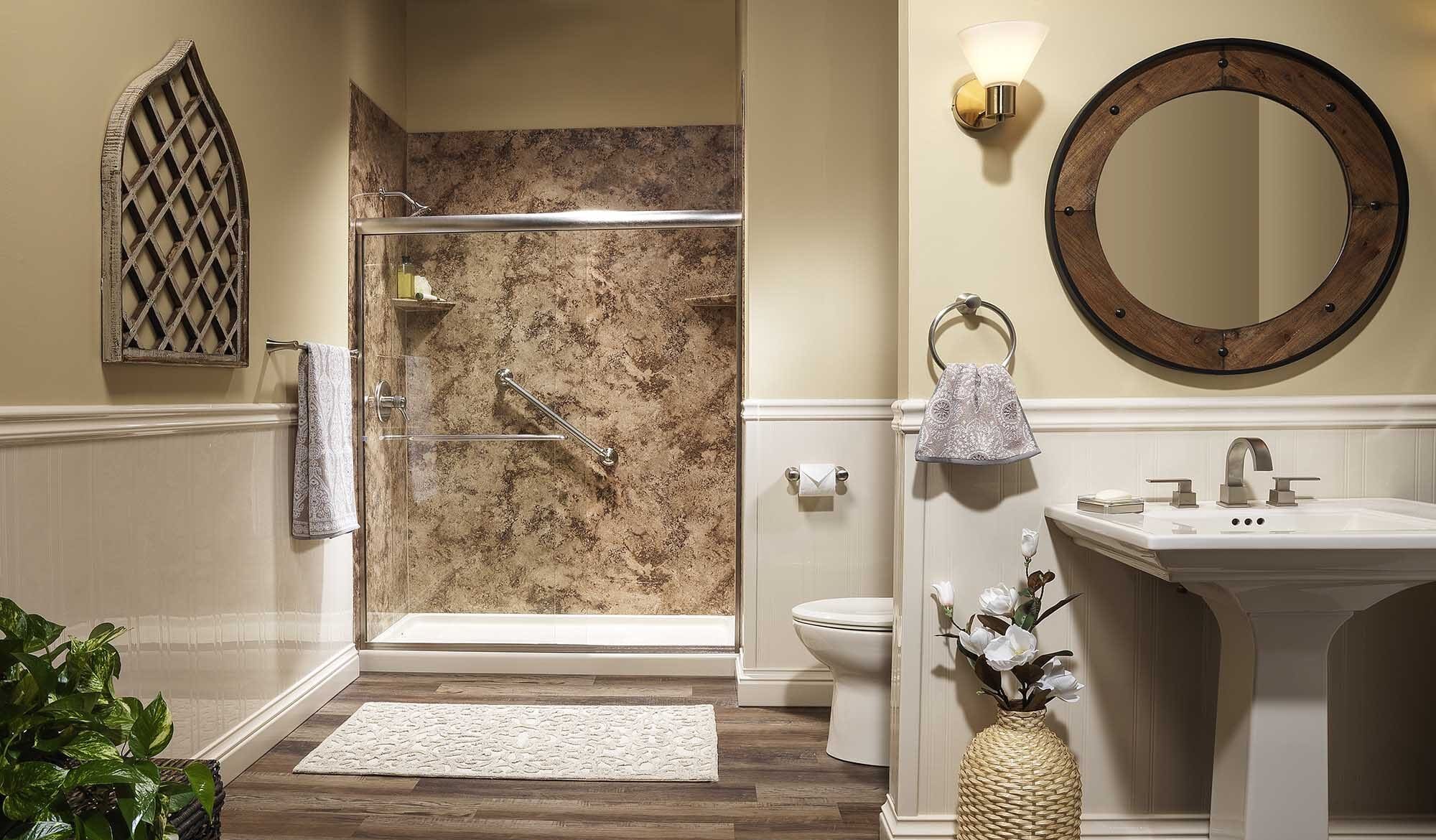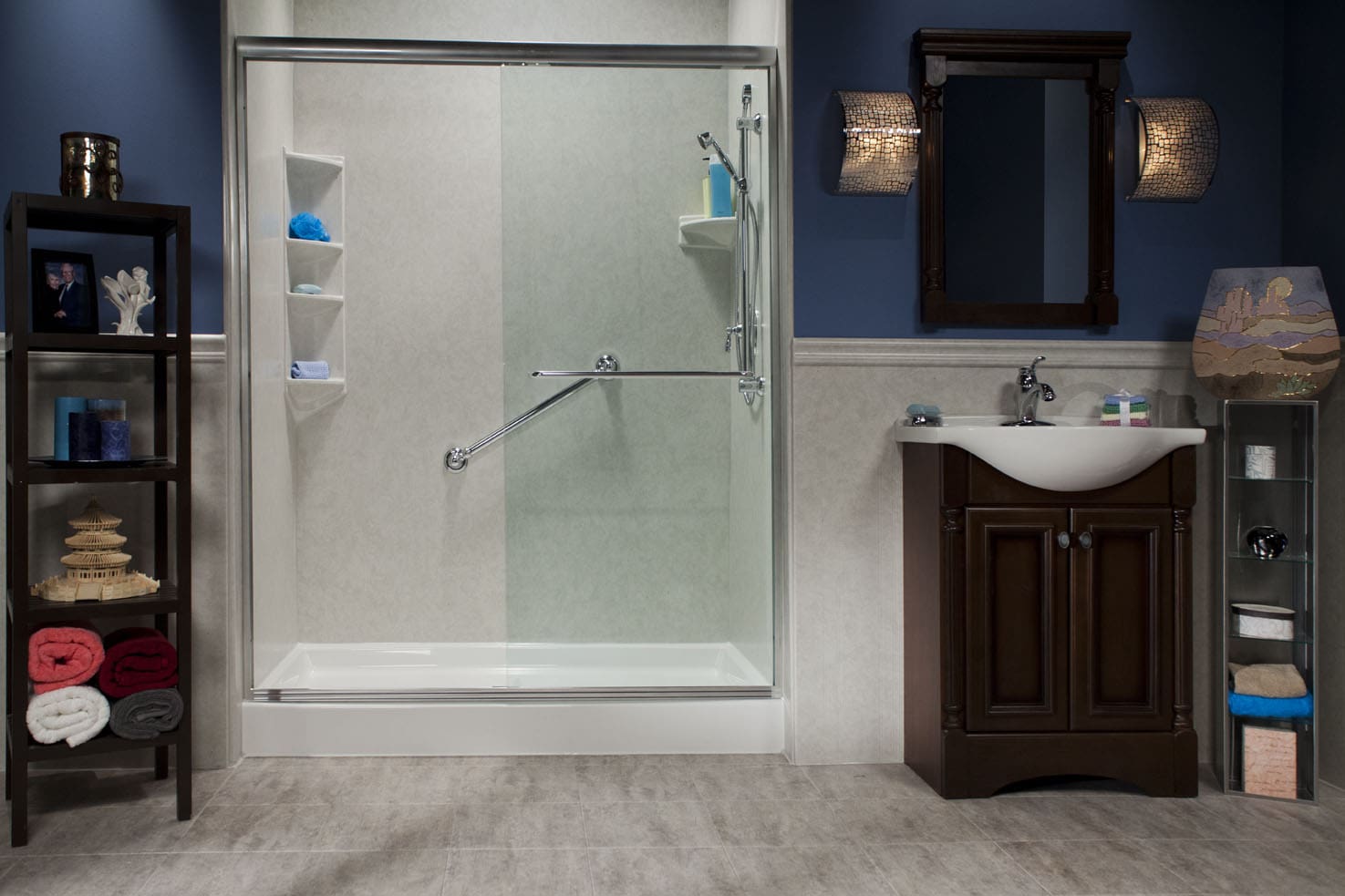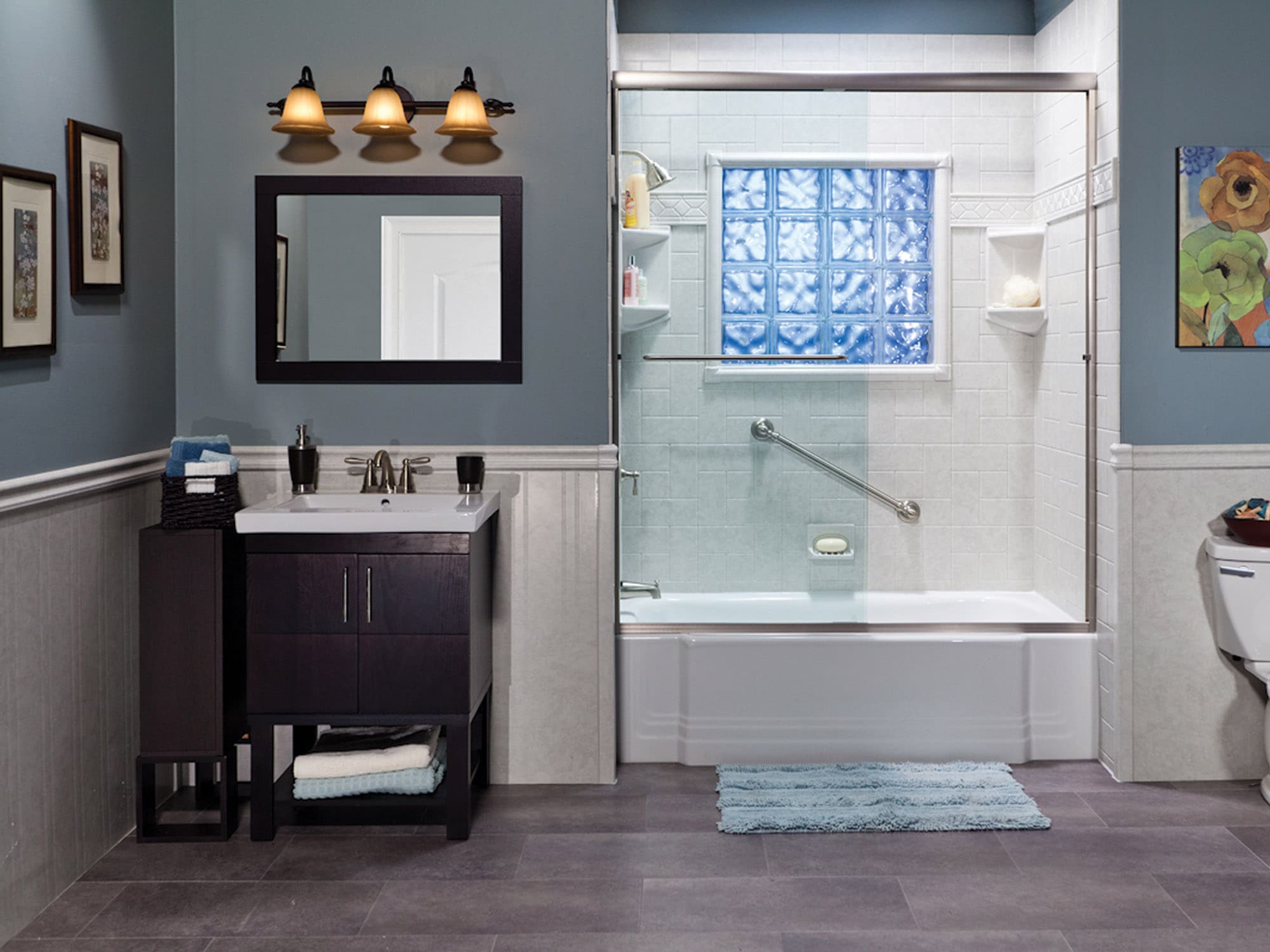Choosing between a walk-in shower and a traditional shower can significantly impact your bathroom’s functionality, safety, and value. For Western Massachusetts homeowners, this decision involves considerations ranging from accessibility needs to long-term home value. Understanding the distinct advantages and potential drawbacks of each option will help you make an informed choice that serves your household for years to come.
Key Takeaways
- Walk-in showers offer superior accessibility, easier maintenance, and a modern aesthetic, making them ideal for aging in place and universal design
- Traditional showers provide privacy, water containment, and cost-effectiveness, especially for families with children or shared bathrooms
- Professional walk in shower installation MA ensures proper drainage, waterproofing, and compliance with local building codes
Understanding Walk-In Shower Design
Walk-in showers eliminate the barriers found in traditional shower designs. These barrier-free or low-threshold entries create seamless transitions from the bathroom floor into the shower area. The absence of a raised curb or door threshold makes entry and exit effortless for users of all mobility levels.
The defining characteristic of walk-in showers is their open design. Most feature minimal or no doors, relying instead on strategic placement of showerheads and careful slope engineering to contain water within the shower area. This design philosophy prioritizes accessibility and creates a spa-like atmosphere that many homeowners find appealing.
Modern walk-in showers incorporate various design elements to enhance both function and aesthetics. Glass panels, when used, are typically larger and fewer in number than traditional shower enclosures. Floor-to-ceiling tiles create visual continuity, while recessed shelving and built-in benches add practical storage and seating options.
Traditional Shower Benefits and Features
Traditional showers, enclosed by doors or curtains with raised thresholds, have served households effectively for decades. These designs excel at containing water, steam, and heat within a defined space. The enclosed nature of traditional showers creates a more intimate bathing environment that many users prefer.
The raised curb or threshold in traditional showers serves multiple purposes beyond water containment. It helps maintain proper drainage slopes, prevents water from migrating to adjacent areas, and creates a clear boundary between wet and dry zones in the bathroom. This design feature, while potentially challenging for some users, provides reliable water management.
Door and curtain systems in traditional showers offer flexibility in design and budget. Options range from simple curtain systems to elaborate glass door configurations with custom hardware. This variety allows homeowners to balance functionality with aesthetic preferences while controlling costs.
Accessibility and Safety Considerations
Walk-in showers provide significant advantages for users with mobility challenges or those planning to age in place. The absence of step-over barriers eliminates tripping hazards and makes the shower accessible to wheelchair users and individuals with limited mobility. This universal design approach benefits all household members, not just those with current mobility needs.
Safety features in walk-in showers can be seamlessly integrated into the design. Grab bars, built-in seating, and non-slip flooring materials enhance safety without compromising aesthetics. The open design allows for easier supervision of children or elderly family members who may need assistance while bathing.
Traditional showers, while requiring users to step over a threshold, can also incorporate safety features effectively. The enclosed nature allows for strategic placement of grab bars and provides walls for support during entry and exit. However, the step-over requirement does present a potential safety concern for some users.
For Western Massachusetts homeowners considering long-term accessibility needs, walk-in showers often represent a more future-proof investment. The barrier-free design accommodates changing mobility needs without requiring major renovations later.
Water Management and Drainage
Effective water management distinguishes successful shower installations from problematic ones. Walk-in showers rely heavily on proper floor slope and drainage system design to prevent water from escaping the shower area. This requires precise installation techniques and high-quality waterproofing materials.
The drainage system in walk-in showers typically features linear drains or multiple point drains strategically positioned to capture water efficiently. These systems must handle the same water volume as traditional showers while working with more gradual floor slopes. Professional installation ensures adequate drainage capacity and proper slope calculations.
Traditional showers benefit from the water containment provided by their enclosed design. The raised threshold creates a natural barrier that prevents water migration, while doors or curtains provide additional containment. This design approach is more forgiving of minor installation imperfections and requires less precise slope engineering.
Waterproofing requirements differ between the two shower types. Walk-in showers need comprehensive waterproofing that extends beyond the immediate shower area, while traditional showers can focus waterproofing efforts within the enclosed space. This difference impacts both installation complexity and long-term maintenance needs.
Maintenance and Cleaning Requirements
Walk-in showers generally require less maintenance than traditional showers due to their simplified design. The absence of door tracks, hinges, and seals eliminates common maintenance points that can accumulate soap scum and mineral deposits. Large tile surfaces and minimal grout lines make cleaning more straightforward.
The open design of walk-in showers provides easy access to all surfaces for cleaning and maintenance. There are no tight spaces or awkward angles that make thorough cleaning difficult. This accessibility advantage extends to maintenance tasks such as re-caulking or tile repairs.
Traditional showers require more attention to door seals, tracks, and moving parts. Glass doors need regular cleaning to maintain clarity, while door seals require periodic inspection and replacement. Curtain systems need regular washing or replacement to maintain hygiene and appearance.
However, traditional showers may require less frequent deep cleaning of surrounding areas since water containment is more effective. The enclosed design protects adjacent surfaces from water damage and reduces the need for extensive waterproofing maintenance.
Design Flexibility and Aesthetic Options
Walk-in showers offer extensive design flexibility that appeals to many homeowners. The open design creates opportunities for dramatic tile work, multiple showerheads, and spa-like features. Large format tiles, natural stone, and custom mosaics can be showcased effectively in walk-in designs.
The seamless integration of walk-in showers with the overall bathroom design creates visual continuity that makes spaces appear larger. This design approach works particularly well in smaller bathrooms where traditional shower enclosures might feel cramped or overwhelming.
Traditional showers provide their own design advantages, particularly in terms of creating distinct zones within the bathroom. The enclosed nature allows for different design themes within the shower area while maintaining cohesion with the broader bathroom design. This approach can be effective in larger bathrooms where creating intimate spaces is desirable.
Privacy considerations often favor traditional showers, especially in shared bathrooms or households with children. The enclosed design provides visual privacy and can help contain sound, making simultaneous bathroom use more comfortable for multiple family members.
Cost Considerations for Western MA Homeowners
The cost difference between walk-in and traditional showers varies significantly based on design complexity, materials, and installation requirements. Walk-in showers typically require more extensive waterproofing and precise installation, which can increase labor costs.
Material costs for walk-in showers often exceed those for traditional showers due to the need for specialized drainage systems, extensive waterproofing materials, and often higher-end finishes. The open design makes every surface visible, encouraging investment in premium materials and finishes.
Traditional showers can be more cost-effective, particularly for budget-conscious homeowners. Standard plumbing fixtures, simpler waterproofing requirements, and readily available enclosure systems help control costs. The enclosed nature also allows for more budget-friendly material choices in less visible areas.
Long-term value considerations favor different approaches depending on household needs. Walk-in showers often add more resale value due to their modern appeal and accessibility features. Traditional showers may provide better value for families with young children or those prioritizing functionality over aesthetics.
Installation Complexity and Professional Requirements
Professional walk in shower installation MA requires expertise in waterproofing, drainage design, and accessibility standards. The barrier-free design demands precise slope calculations and comprehensive waterproofing systems that extend beyond the immediate shower area. Mistakes in installation can lead to water damage and costly repairs.
The complexity of walk-in shower installation makes professional installation essential. Proper membrane installation, drainage system integration, and tile work require specialized knowledge and tools. DIY installation is not recommended due to the high risk of water damage from installation errors.
Traditional shower installation, while still requiring professional expertise, involves more standardized procedures and materials. The enclosed design and raised threshold provide more margin for error in waterproofing and drainage. This can result in more predictable installation timelines and costs.
Building code compliance varies between shower types and local jurisdictions. Walk-in showers must meet specific accessibility standards and drainage requirements, while traditional showers follow established plumbing and safety codes. Professional installers ensure compliance with all applicable regulations.
Climate and Regional Considerations
Western Massachusetts weather patterns influence shower design decisions. The region’s cold winters and humid summers affect ventilation requirements and material choices. Walk-in showers may require more robust ventilation systems to manage moisture in the open design.
The heating efficiency of different shower types varies with regional climate conditions. Traditional showers retain heat and steam more effectively, which can be advantageous during cold New England winters. Walk-in showers may require supplemental heating or enhanced ventilation to maintain comfort.
Material selection for both shower types must account for regional climate factors. Freeze-thaw cycles, humidity levels, and temperature variations affect the longevity of different materials and installation methods. Professional installers familiar with local conditions can recommend appropriate materials and techniques.
Making the Right Choice for Your Home
Household demographics significantly influence the best shower choice. Families with young children often benefit from traditional showers’ water containment and privacy features. Households with elderly residents or those planning to age in place typically favor walk-in shower accessibility.
Current and future mobility needs should guide the decision-making process. While installing a walk-in shower may seem unnecessary for young, able-bodied households, the universal design benefits serve all users and provide future-proofing against changing needs.
Bathroom size and layout constraints may limit options for some homeowners. Smaller bathrooms might benefit from walk-in showers’ space-efficient design, while larger bathrooms can accommodate either option effectively. Professional bathroom remodel MA consultation can help determine the best fit for your specific space.
Professional Installation and Quality Assurance
Selecting qualified professionals for shower installation protects your investment and ensures long-term performance. Look for contractors with specific experience in your chosen shower type and positive references from Western Massachusetts homeowners.
Quality installation begins with proper planning and design. Professional installers assess your bathroom’s structural requirements, plumbing needs, and ventilation requirements before beginning work. This comprehensive approach prevents costly modifications during construction.
Warranty coverage varies between installation companies and should factor into your decision. Reputable contractors stand behind their work with comprehensive warranties covering both materials and workmanship. This protection provides peace of mind and ensures prompt resolution of any issues.
Enhancing Your Western MA Bathroom
Both walk-in and traditional showers can significantly enhance your Western Massachusetts bathroom when properly designed and installed. The choice between them depends on your household’s specific needs, budget, and long-term plans.
Walk-in showers excel in accessibility, modern aesthetics, and ease of maintenance. They represent an excellent investment for homeowners prioritizing universal design and contemporary styling.






